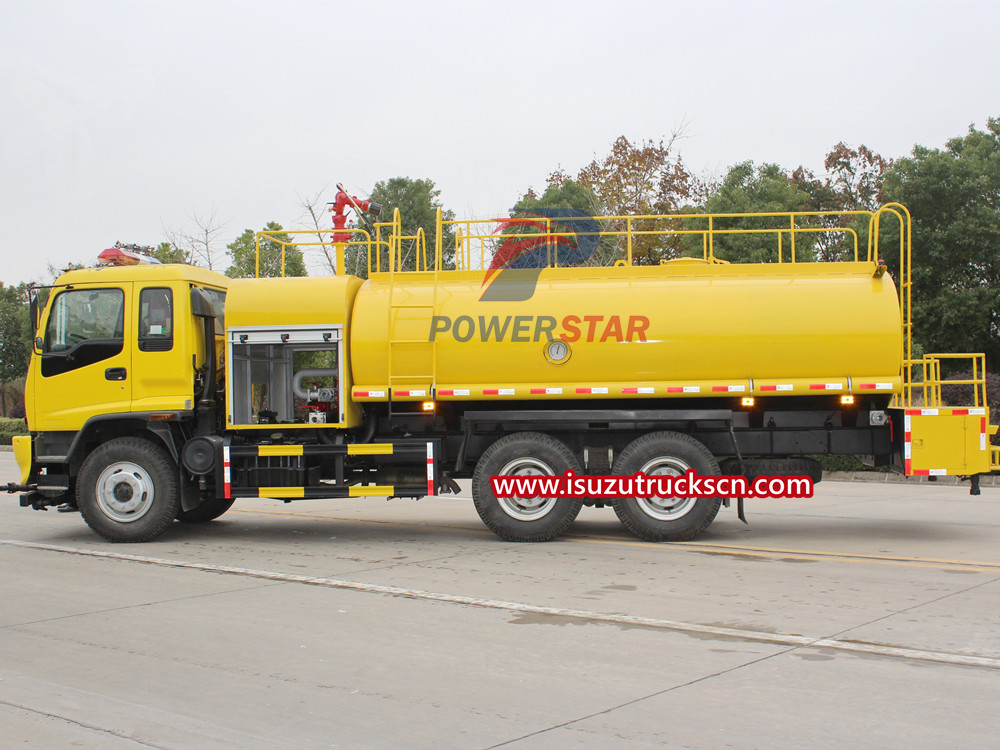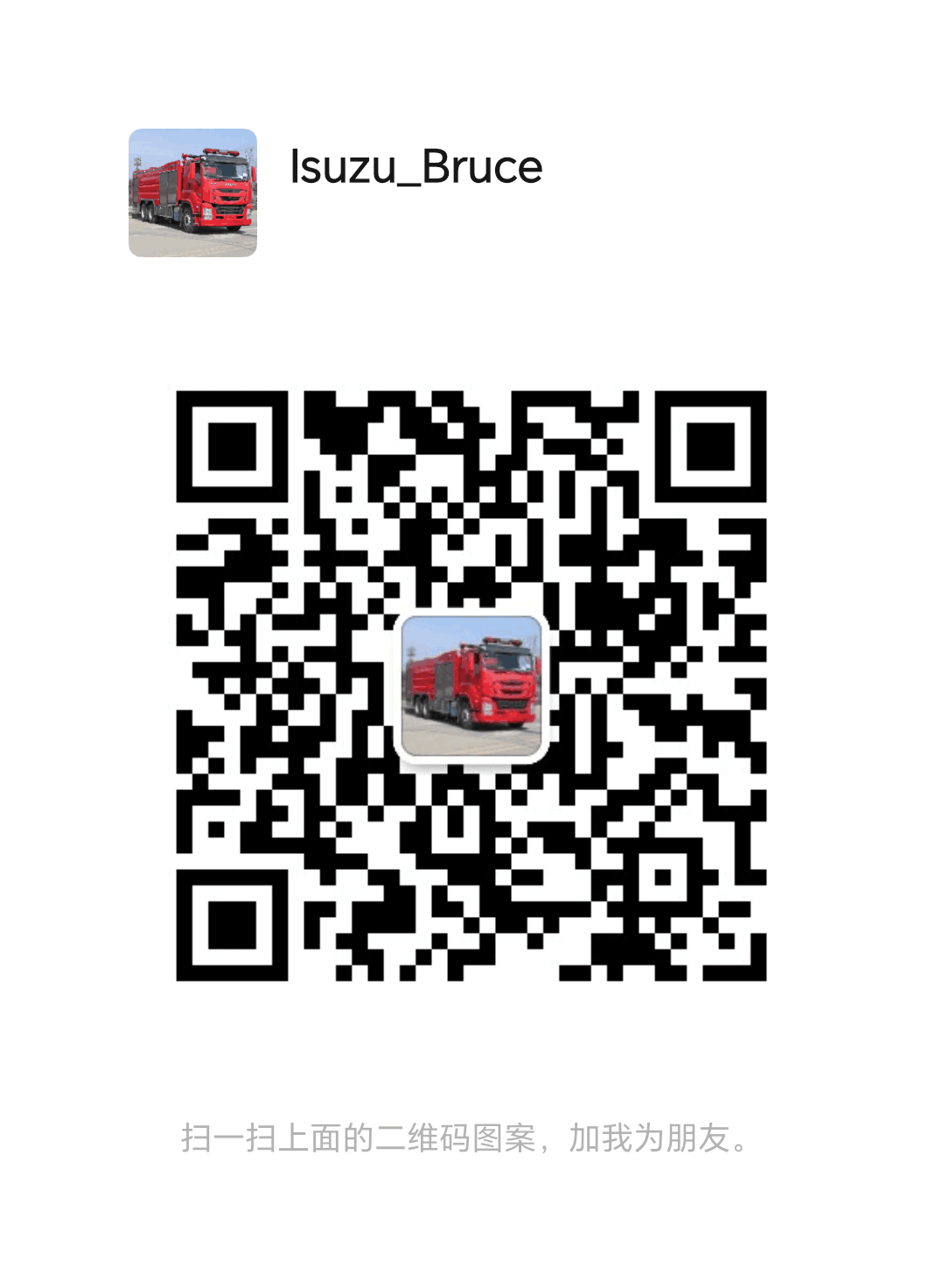


The driving water injection operation, water absorption operation, self-destruction operation, heating operation, etc. Isuzu fire trucks have been standardized in order to allow Isuzu fire trucks to be used more continuously and reduce unnecessary losses.
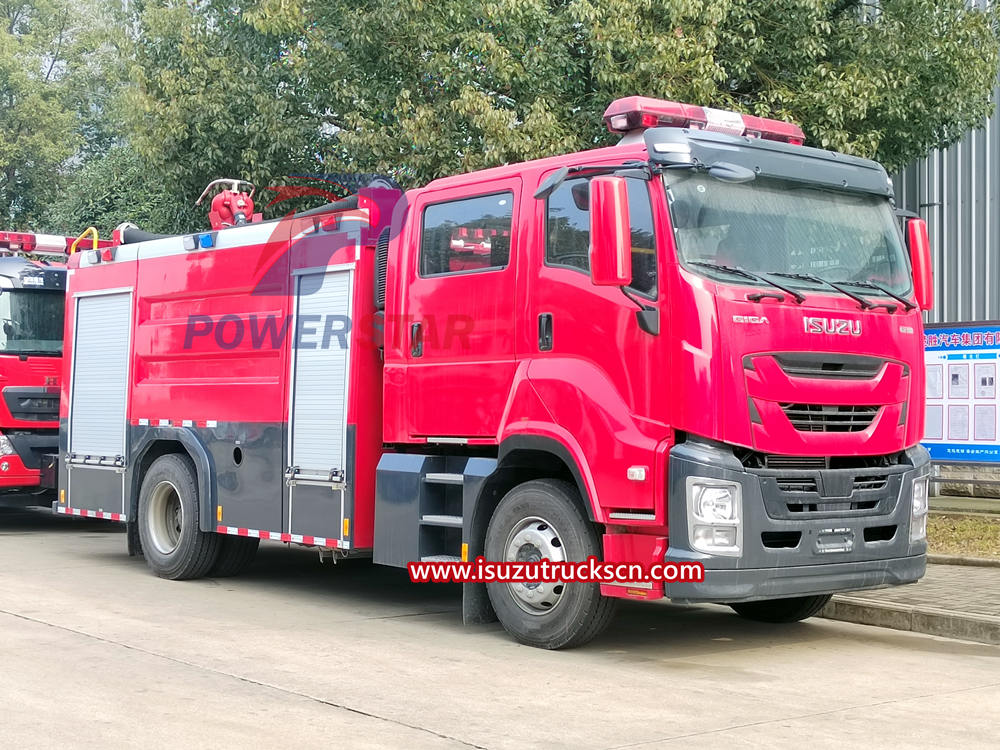
A. Driving water injection operation
When it is necessary to use a vehicle-mounted gun while traveling (double-action operation), use the driving water-jet operation. When driving and spraying water, the heavy-duty water tank fire truck is driving at low speed, put the transmission gear lever in 1st or 2nd gear (speed <30km/h), and operate the remote control lever of the vehicle-mounted gun in the cab to operate the vehicle-mounted gun to discharge water.
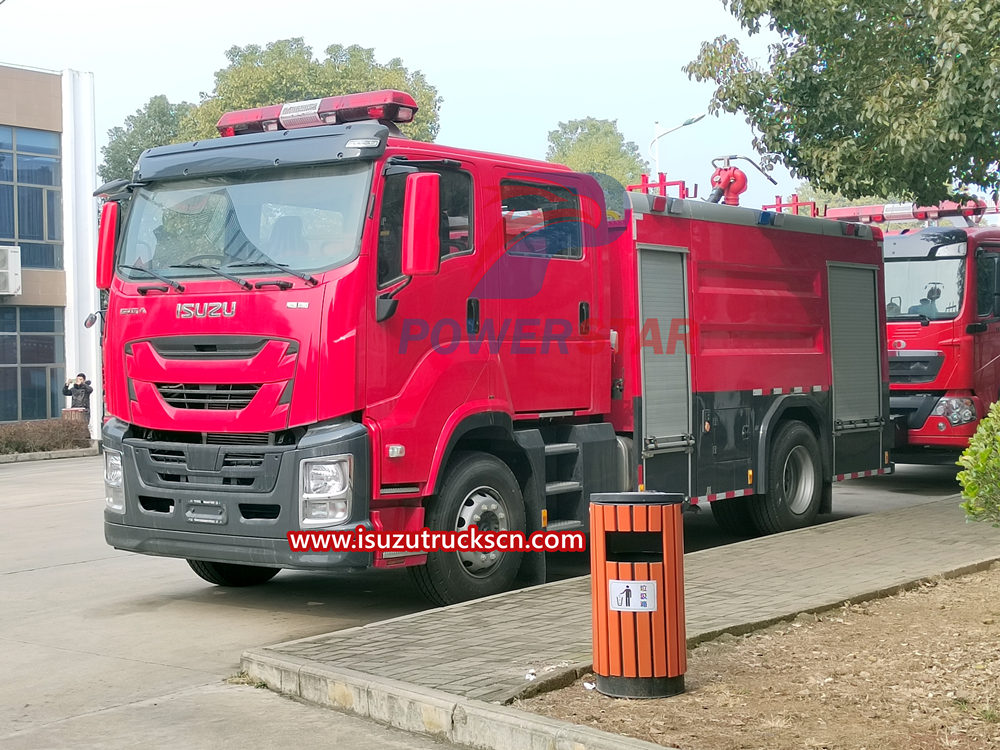
B. Water absorption operation
1. Use natural water sources to supply water to heavy-duty water tank fire trucks. Before absorbing water, you should first close all water outlet valves, water discharge valves and "gun water" switch, open the water suction port cover and water suction port valve, connect the water suction pipe, and then put the other end of the water suction pipe and the water filter into the water source. , and then perform water suction and water injection operations or water suction and water injection operations according to the needs of the site. The water depth of the water filter should be greater than 500mm, and the distance from the water source wall should not be less than 200mm.
2. After connecting the pipeline, pull the water diversion handle of the electric vacuum pump outward. When the vacuum gauge shows negative pressure, start water diversion. When the vacuum gauge shows positive pressure or the vacuum pump outlet continuously discharges water for 5 seconds, release the water diversion handle. The continuous working time of the electric vacuum pump should not exceed 1 minute, and the intermittent time between each operation should not be less than 30 seconds. If the vacuum pump fails to absorb water within 60 seconds of being turned on, check whether the system pipeline is leaking and wait until the fault is eliminated before proceeding. After water diversion is successful, start the fire pump.
3. If the vehicle-mounted cannon or water outlet is directly used to discharge water, the throttle should be slowly increased. When the fire pump outlet pressure reaches 0.2MPsa~0.3MPa, open the "gun water" switch or outlet valve. It is strictly prohibited to open the outlet valve facing the water outlet. When it is necessary to stop the water suction and discharge operation, adjust the throttle to the lowest position, close the "gun water" switch or the water outlet valve, and turn off the fire pump.
4. If water is poured directly into the water tank, slowly increase the throttle until the fire pump pressure gauge displays a numerical value, then turn on the "water tank filling" switch in the pump chamber to fill the water tank. During water injection operation, the outlet pressure of the fire pump shall not be greater than 0.5MPa. After the water tank filling is completed, adjust the throttle to the lowest position, turn off the "tank filling" switch, and turn off the fire pump.
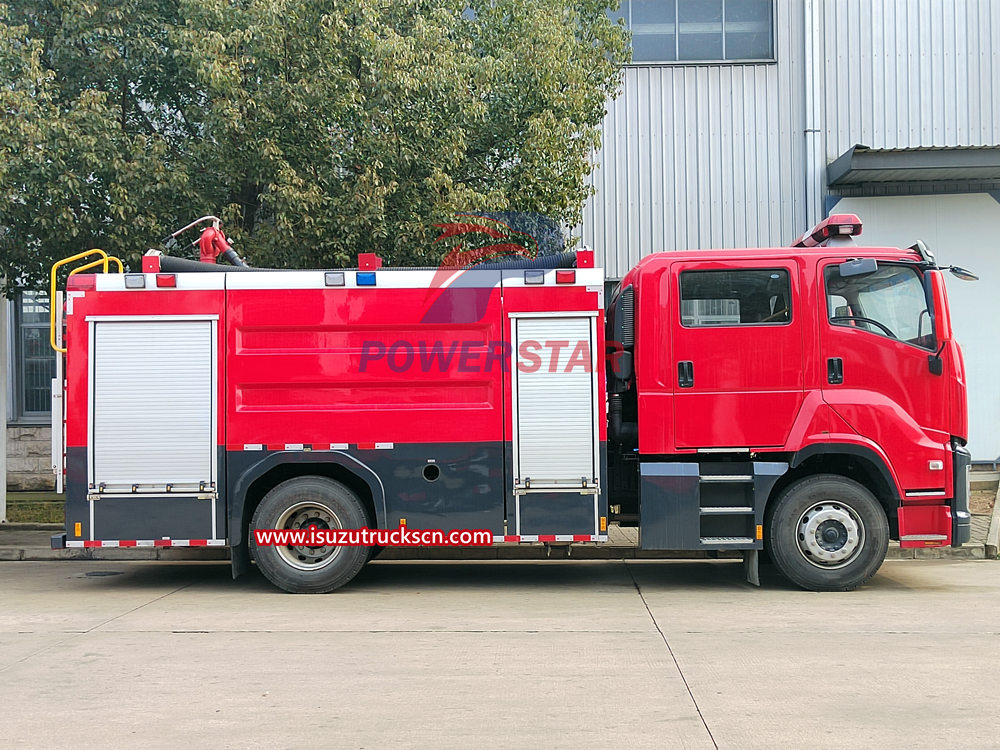
C. Self-protection operation
When the chassis of a heavy water tank fire truck is threatened by ground fire or high temperature baking during operations, the chassis self-protection system should be activated immediately for protection. After confirming that the fire pump is in the starting state, adjust the throttle so that the fire pump outlet pressure is ≤0.7MPa (the fire pump outlet pressure should not be too high during self-protection spraying, otherwise it will cause fire to flow on the ground and fail to protect it), and then turn on the driving Press the "self-protection" switch on the operation panel of the pump room or pump room, and the five spray-type self-protection nozzles on the chassis start spraying water. After the threat of ground flow fire is eliminated, turn off the "self-protection" switch.
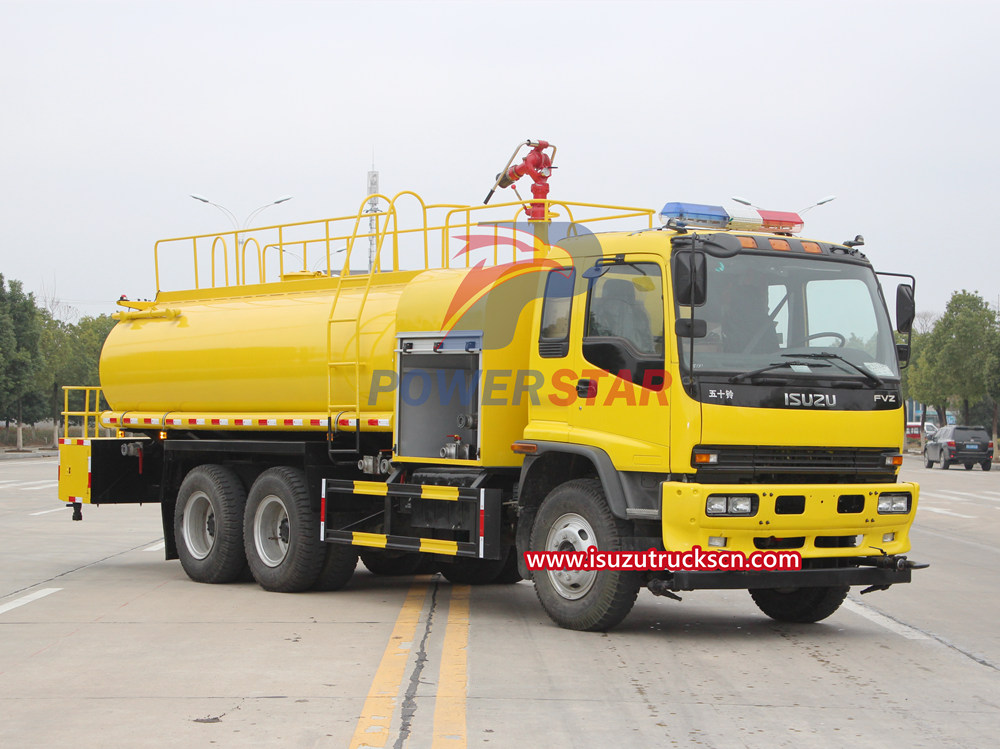
D.Heating operation
1. In the low-temperature environment in winter where fire water is easy to freeze, the water outlet valve and pump room heating system should be started in time to prevent the water outlet valve from freezing and ensure the normal operation of the fire pump system.
2. To heat the water outlet valve, you should first turn on the "heating" switch on the cab operation panel and start the heater to heat the water outlet valve. Stop heating the water outlet valve and turn off the "heating" switch.
3. To heat the pump chamber, first turn on the heater switch on the cab operation panel and start the heater to provide heating protection for the pump chamber. Stop heating the pump chamber and turn off the fuel heater.
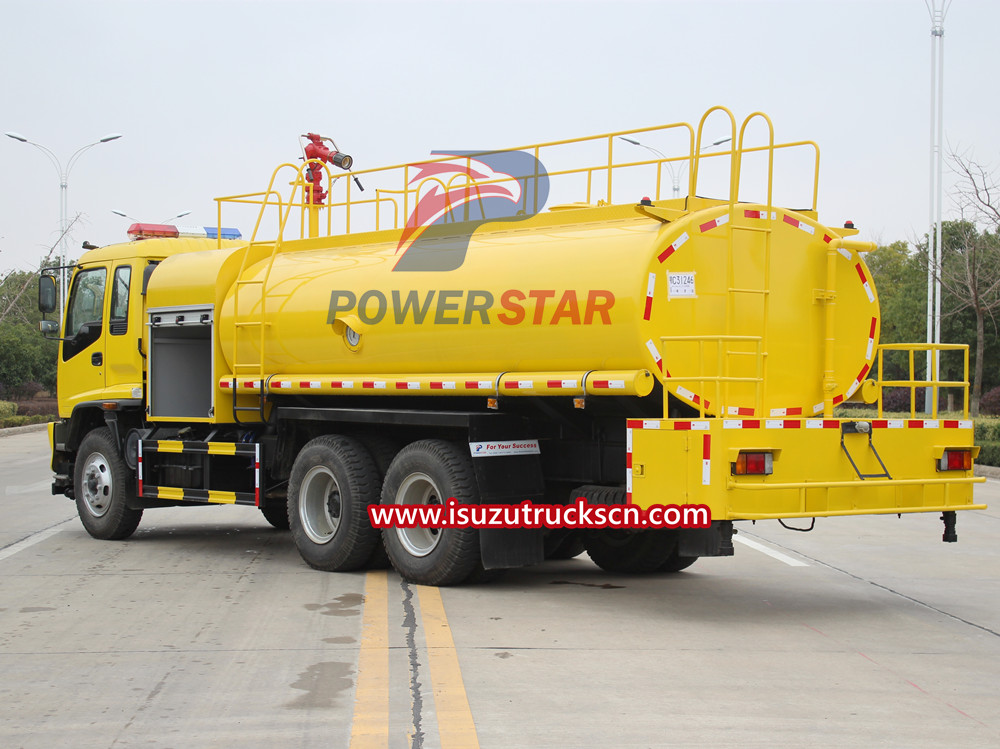
E. Emergency operation
1. If the equipment is not operating normally, has strange noises or abnormal phenomena, stop the machine immediately and troubleshoot.
2. When an equipment failure occurs while driving, you should park on the right side of the road, place a warning sign 50 meters to 100 meters behind the car, and turn on the emergency lights.
3. If a tire is damaged, the vehicle should be parked as far away from traffic as possible, and the ground at the parking location should be level.
4. Lock the parking brake to prevent the vehicle from moving unintentionally.
5. The engine temperature is too high: Do not turn off the engine immediately, remove the load, reduce the throttle and run at idle speed, find out the cause, and do not open the water tank immediately.
6. Engine speed: The inlet pipeline of the high-pressure oil pump should be cut off immediately or the air intake passage should be blocked.
7. Engine oil pressure is too low: Stop the vehicle immediately to find out the cause.
8. There is abnormal noise in the main clutch: Turn off the engine and stop immediately to find out the cause.
9. When other chassis faults occur, handle them according to the general diesel vehicle operating procedures.
10. When there is a failure in the upper body equipment, immediately reduce the engine speed, turn off the power take-off, and then identify the cause.